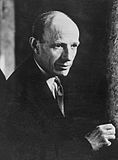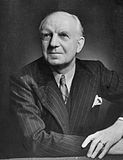1938 Estmerish general election
| |||||||||||||||||||||||||||||||||||||||||||||||||||||||||||||||||||||||||||||
All 600 seats in the Chamber of Commons 301 seats needed for a majority | |||||||||||||||||||||||||||||||||||||||||||||||||||||||||||||||||||||||||||||
|---|---|---|---|---|---|---|---|---|---|---|---|---|---|---|---|---|---|---|---|---|---|---|---|---|---|---|---|---|---|---|---|---|---|---|---|---|---|---|---|---|---|---|---|---|---|---|---|---|---|---|---|---|---|---|---|---|---|---|---|---|---|---|---|---|---|---|---|---|---|---|---|---|---|---|---|---|---|
| Registered | 32,018,777 | ||||||||||||||||||||||||||||||||||||||||||||||||||||||||||||||||||||||||||||
| Turnout | 25,403,272 (79.34%; | ||||||||||||||||||||||||||||||||||||||||||||||||||||||||||||||||||||||||||||
| |||||||||||||||||||||||||||||||||||||||||||||||||||||||||||||||||||||||||||||
| |||||||||||||||||||||||||||||||||||||||||||||||||||||||||||||||||||||||||||||
The 1938 Estmerish general election was held on 19 August 1938. It was the first nationwide general election to take place after the conclusion of the Great War, though it was preceded by the 1935 elections to the constitutional assembly. The newly reconstituted Chamber of Commons saw all 600 seats up for election. It was the first Estmerish election held under the new additional member system, which was semi-proportional and made it harder to attain a single-party majority.
Estmere was a changed country following the Great War. The occupation had strengthened national unity and broken down class barriers, two referendums in 1936 had abolished the monarchy and ended the union with Borland, and the country narrowly avoided revolution in the 1937 mutiny. The mutiny ensured that Estmere was a federation, and the constitutional assembly had ensured that elections would be run under a semi-proportional system. The political landscape had changed with the country. The two titans of pre-war politics - the Unionist Party and the Constitutionalist Party - were both seen to have been tainted by their failure to prepare Estmere for war. The Unionists saw many of their high-profile figures defect to other parties of the right, such as the Sotirian People's Party and the National Democratic Party. The Constitutionalists were in a stronger position, but had nevertheless lost their position as the main party of the left to the Socialist Party of Estmere, and struggled to define themselves in the post-war world.
In spite of the tumult of the time, the conduct of the election was tame. The centre-left Vincent Holmes and centre-right Laurence Montgomery were the main figures expected to become prime minister, and they had both served closely together in the Fighting Estmere government. Holmes and Montgomery had agreed to protect the newfound national unity by running positive campaigns and refusing to denigrate the other candidate or their party. In recognition of this, the majority of other mainstream parties followed suit and ran positive campaigns of their own; the only major exceptions were the far-left Estmerish Section of the Workers' International and the right-wing Rally of the Republic.
The Socialist Party came first in the overall vote, but centre and centre-right parties won a majority of the seats. This was partially due to a higher than average turnout in Arvorne and Roland, which leaned to the right. President Godfredson called on Montgomery to assemble a government. He formed a broad coalition led by his own Sotirian People's Party, including the National Democrats, the Constitutionalists and the remnants of the Unionists, with additional support from the independent liberals and conservatives.
Results
There were 25,387,102 valid ballots cast. Turnout was 79.34%, with 25,403,272 voters, up 3.7% on the elections to the constitutional assembly.
 | ||||||
|---|---|---|---|---|---|---|
| Party | Constituency | Party | Seats | |||
| Votes | % | Votes | % | |||
| Socialist Party of Estmere | 9,223,928 | 36.34 | 8,365,784 | 32.98 | 233 | |
| Sotirian People's Party | 8,634,572 | 34.01 | 7,458,170 | 29.40 | 182 | |
| National Democratic Party | 3,868,918 | 15.24 | 3,603,626 | 14.21 | 83 | |
| Estmerish Section of the Workers' International | 1,199,034 | 4.72 | 2,190,359 | 8.63 | 51 | |
| Constitutionalist Party | 1,046,615 | 4.12 | 1,173,543 | 4.63 | 19 | |
| Rally of the Republic | 269,275 | 1.06 | 932,417 | 3.68 | 17 | |
| Radical Liberal Party | 312,460 | 1.23 | 670,767 | 2.64 | 3 | |
| Independent Socialists | 144,799 | 0.57 | 331,524 | 1.31 | 4 | |
| Independent Liberals | 335,323 | 1.32 | 326,605 | 1.29 | 4 | |
| Independent Conservatives | 256,573 | 1.01 | 177,286 | 0.70 | 2 | |
| Party of the Swathish | 55,887 | 0.22 | 84,811 | 0.33 | 2 | |
| All other parties | 37,505 | 0.15 | 52,922 | 0.21 | – | |
| Total | 25,384,889 | 100.00 | 25,367,814 | 100.00 | 600 | |
| Valid votes | 25,384,889 | 99.93 | 25,367,814 | 99.85 | ||
| Invalid/blank votes | 18,382 | 0.07 | 37,505 | 0.15 | ||
| Total votes | 25,403,271 | 100.00 | 25,405,319 | 100.00 | ||
| Registered voters/turnout | 32,018,777 | 79.34 | ||||
| Source: EBS News Archive | ||||||





